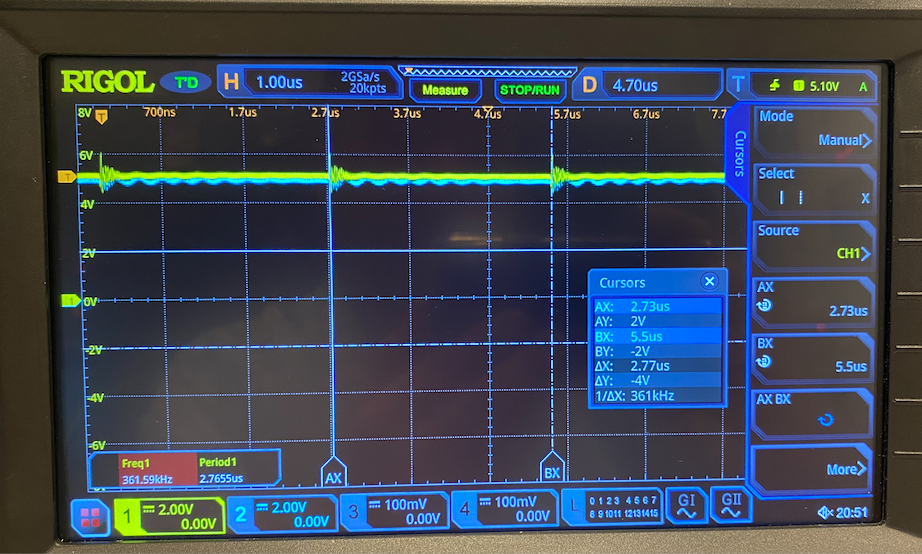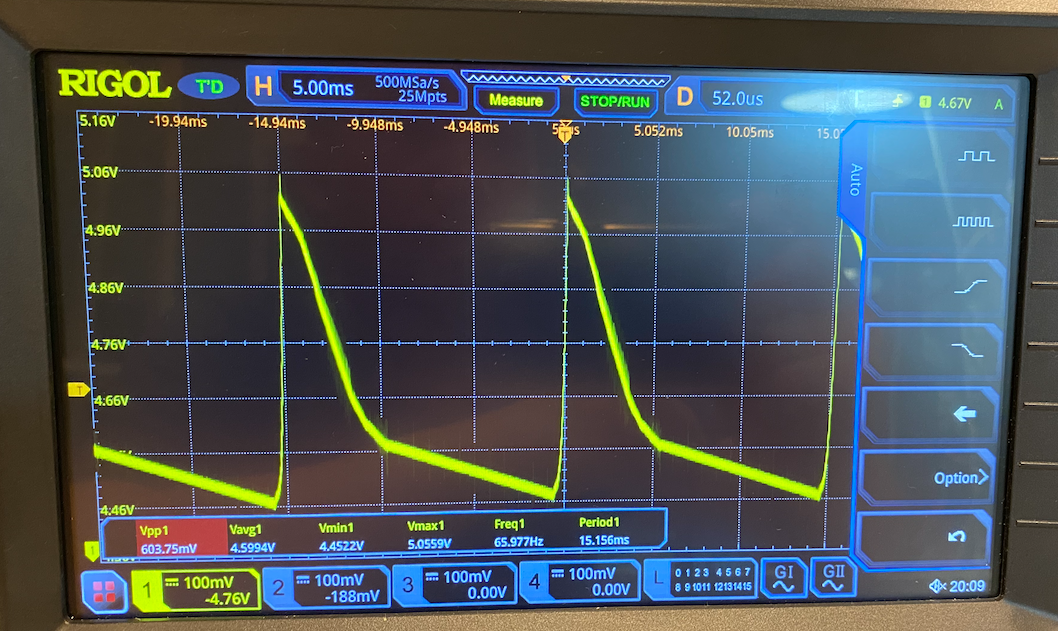Other Parts Discussed in Thread: PMP40514, TLV431, , TPS23758
Thanks to all your advice, my POE adapter is starting to work nicely.
My biggest issue is a 900mv peak-to-peak ripple on the output. I was wondering if anyone could offer a few things to look at, for example A) Your type-2 compensator is not tuned correctly, or B) something else?
After putting the original specified opto with 80-160% gain and the right 330nH inductor, things are looks great!
I've tuned the original oscillation by snubbing the output diode (10 Ohm+1nF and/or 10nF) and that really helped.... I think....
At steady state current draw/fairly heavy load 10W+, output is rock solid for 80% of the time other than the switching ripple . (not sure about the instant response over/undershoot, but nothing I can see right now)
Again like before I'm basing my design on the PMP40514 with a different transformer for 5v output (POE13-50).
I started with all values as designated in the original schematic, but admit I've messed around with it a bit to get this far so... who knows.
No matter the current draw, my output voltage is roughly like this (higher draw means more ripple):
Also at the advice of your team I've got the bode plot at 10W draw (approx)! Yay!
Clearly this Rigol has a strange scale bug (green vertical doesn't match "real phase") . But anyways, Gain Margin 20db, Phase Margin 67.91deg. Does it look sane? Looks sane to me.
Reference from the test report tidt074.pdf
I have a handwound 1:1 transformer (on a budget where possible) for the ripple injection, so maybe it's not perfect. Not sure how to tell how good my transformer response is.
I noticed that in my bode plot and the PMP40514 Test Report that below 100Hz and above 100kHz that phase and gain start to go a bit all over the place. In general, is there a frequency range outside which "I don't have to care too much"?....
Thankfully as far as I can tell, even with changing loads from 5-10W I can't see anything strange so I assume the magic is working.
Thanks so much for the advice!
Jeff







